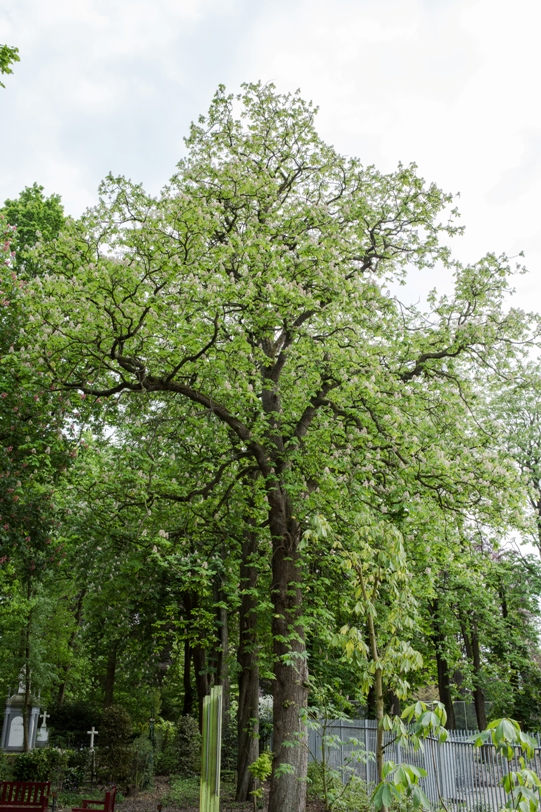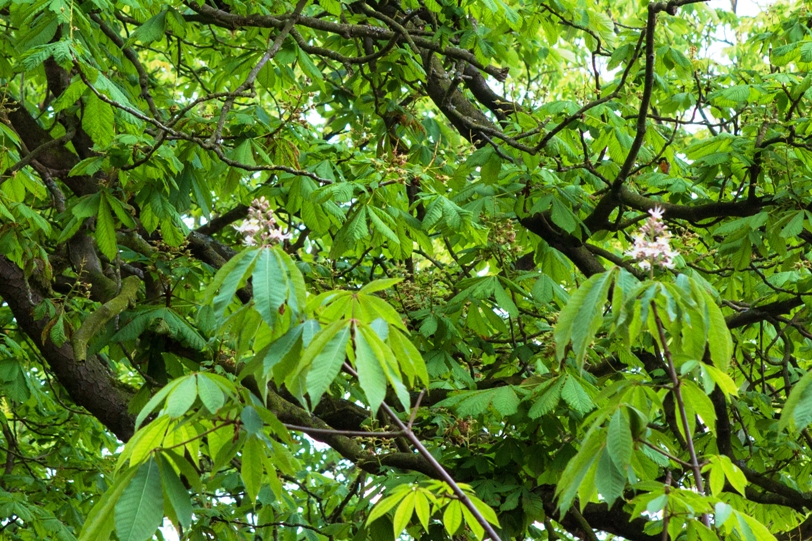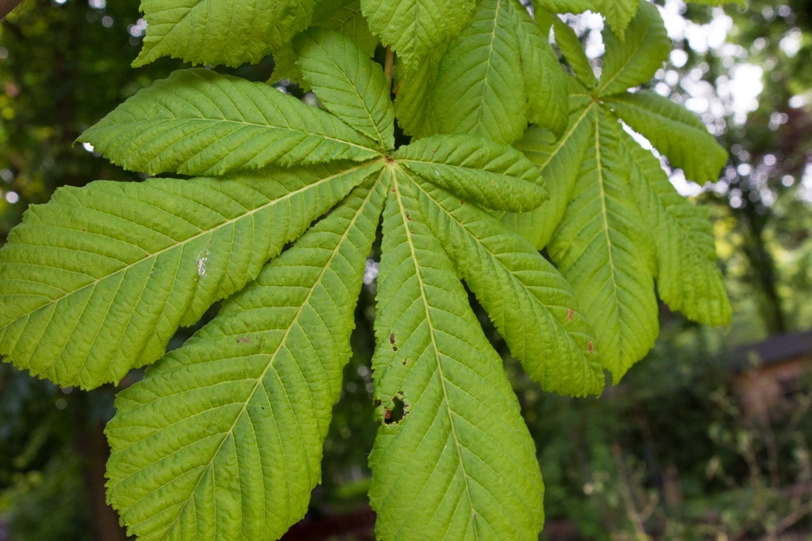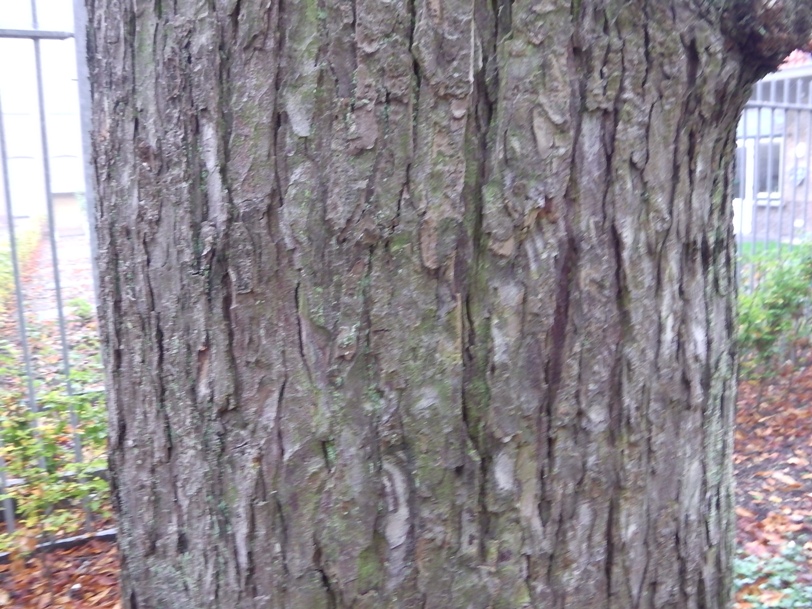Horse-chestnut
Aesculus hippocastanum 'Tortuosa'
Soapberry family (Sapindaceae)
Shiny, brown seed
In May the horse chestnut bears erect panicles of white flowers with flecks of yellow to red – these are nectar- (or floral) guides that direct insects to the nectar. After flowering spiky green husks appear from which a large, glossy, brown seed - the conker - falls in the autumn.
Aesculus hippocastanum originates from the Balkans, Greece and Bulgaria where it grows up to altitudes of 1500 meters. Today in the wild the species is considered to be endangered as there are no more than about 10,000 individuals. However as a result of human involvement, the horse chestnut has been planted the world over.
Two diseases however are taking their toll: bleeding canker, a bacterium that affects the phloem, and the horse chestnut leaf miner, the larvae of which can damage the leaf tissue.
Horse chestnuts with twisted branches are known as Aesculus hippocastanum 'Tortuosa’.
Read more.... »Themes
Crown jewel in the Botanic Garden Arboretum Oudenbosch.
The white horse chestnut was introduced to the Netherlands via Vienna by Carolus Clusius, the first director of the Leiden Botanical Garden since 1593. The fruit of the horse chestnut was widely given to horses to cure them of cough, hence the name. The chesnut can be consumed by goats and pigs but is poisonous for humans. In the past, the seeds were ground and added to the adhesive used in bookbinding to help prevent insect damage.
Two chesnuts powdered and placed in an old sealed sock is a mild alternative to expensive washing powders.
Ottoman horsemen used ground fruits to cure horses of respiratory infections.
For humans the chestnuts themselves are toxic.
In the past people carried seeds of the horse chestnut on them to protect themselves against rheumatism.
Details
| Description: | Tree, on average taller than 12 m |
|---|---|
| Distributions: | Only found in cultivation. |
| Habitat: | Forest trees, park trees, in deciduous woodland, and along forest edges |
| Year cycle: | Perennial (polycarpic decidous) |
| Hardiness: | -4 - 5 f (hardy - very cold winter) |
| Flowering period: | April - mei |
| Flower color: | White |
| Notes on flowers: | White flowers with a yellow to orangey-red spot. |
| Fruiting period: | September - oktober |
| Fruit color: | Brown |
| Notes on fruits: | Husk, light green, beige; seed, chestnut brown |
| At its best: | April - mei |
Sources
http://hort.ifas.ufl.edu/database/documents/pdf/tree_fact_sheets/aeshipa.pdf,http://www.floravannederland.nl/planten/Witte+paardenkastanje,
https://www.wilde-planten.nl/witte%20paardenkastanje.htm,
Dendrologie van de lage landen - Jan de Koning en Wim van den Broek, Dendroflora 34: pag.11



